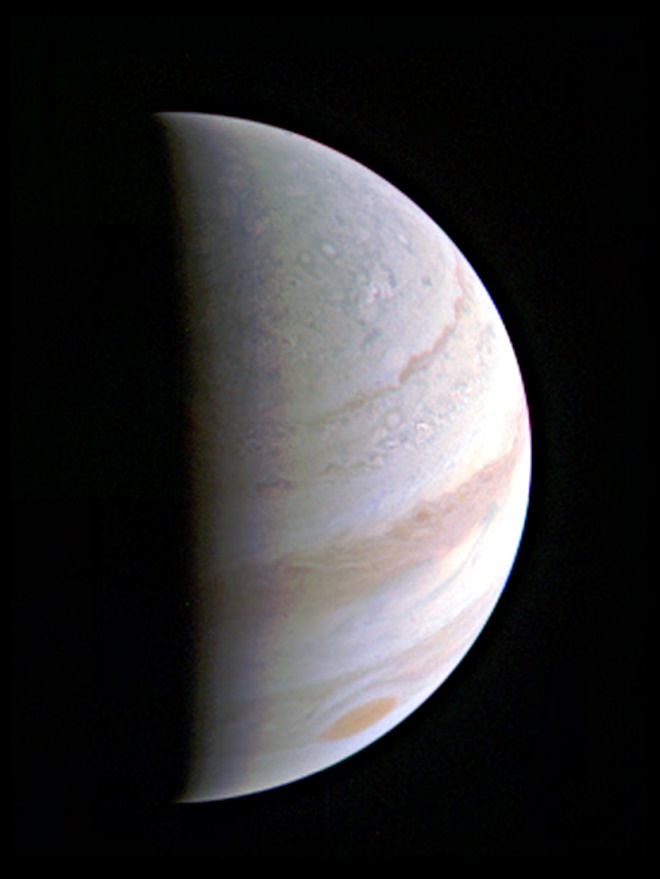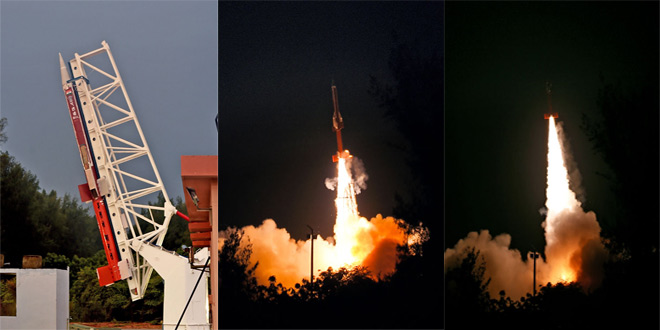
Jupiter's north polar region is coming into view as NASA's Juno spacecraft approaches the giant planet. This view of Jupiter was taken on August 27, when Juno was 703,000 kms away. Photo: NASA/JPL-Caltech/SwRI/MSSS.
"Early post-flyby telemetry indicates that everything worked as planned and Juno is firing on all cylinders," Rick Nybakken, Juno project manager at NASA's Jet Propulsion Laboratory in Pasadena, California was quoted as saying in the NASA news release.
There are 35 more close flybys of Jupiter planned during Juno's mission (scheduled to end in February 2018). The August 27 flyby was the first time Juno had its entire suite of science instruments activated and looking at the giant planet as the spacecraft zoomed past.
"It will take days for all the science data collected during the flyby to be downlinked and even more to begin to comprehend what Juno and Jupiter are trying to tell," Scott Bolton, principal investigator of Juno from the Southwest Research Institute in San Antonio added.
The Juno spacecraft launched on Aug. 5, 2011, from Cape Canaveral, Florida, and arrived at Jupiter on July 4, 2016.
 Previous Article
Previous Article













The Indian Air Force, in its flight trials evaluation report submitted before the Defence Ministry l..
view articleAn insight into the Medium Multi-Role Combat Aircraft competition...
view articleSky enthusiasts can now spot the International Space Station (ISS) commanded by Indian-American astr..
view article